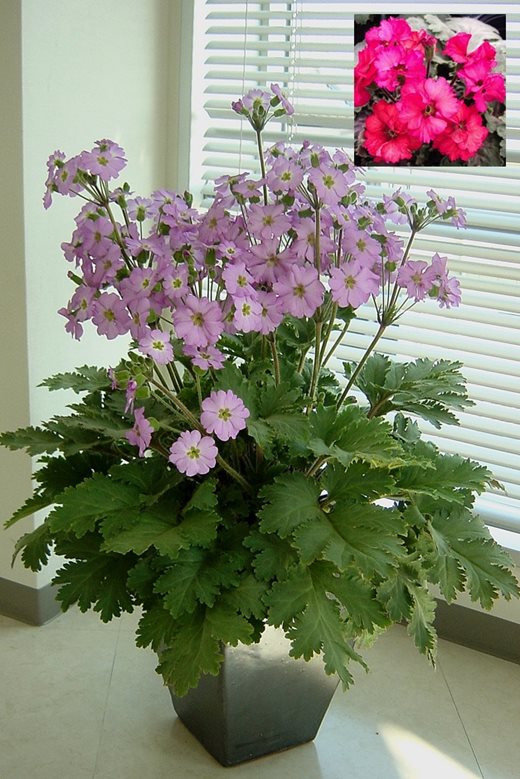One of the rarest of all primula species, and one of the most common, have come together to create new garden plants
It’s not often that we get news of a new hybrid between two
Primula species. And when one of the parents is almost extinct in the wild and the other is one of the most studied of all
Primula species, it’s doubly interesting.

Previously thought to be extinct, two populations
Primula filchnerae were rediscovered in Hubei Province, China, in 2006. Only one of these wild populations, containing fewer than 100 plants, now survives.
However, plants are cultivated to the extent that they are on sale in Japanese markets. This is a very distinctive plant with hairy, boldly-divided leaves, resembling those of a
Potentilla, and carrot-like tubers. The 25mm purple flowers are clustered at the top of short, weak stems.
Primula sinensis, on the other hand, is one of the most studied of all plants and work with this species around a hundred years ago was crucial in the early understanding of plant genetics. This highly variable plant has prolific umbels in a wide range of colours and was once a popular show plant.
Now, Japanese geneticists have crossed
P. filchnerae with
P. sinensis and used laboratory techniques to germinate the resulting seeds. So now we have
Primula Ooh La La!™ ‘Pastel Pink’, followed soon after by Ooh La La!™ ‘Blood Orange’.
More colours are on the way.
Garry Grueber of Cultivaris, who are marketing the plants in Europe, told me:
“These hybrids are remarkable in that they are vigorous and fast-growing, quickly forming a basal rosette of large, fleshy leaves covered with soft, felt-like pubescence.
A single plant can bring forth up to 100 flower stems at once; the flower spikes are about 30cm tall and display candelabra-like branching; the individual flowers are large and long-lasting.
“The plants can be used as an indoor flowering windowsill plant, but
perform best outdoors as a container or garden plant in partial shade. They will start flowering in December and continue flowering for months on end – under cool summer conditions, they will continue flowering right up to autumn.”
I checked with him about the possibility of allergies and he told me: “We’ve only had one single report of an allergic reaction to the foliage. However, I would probably advise that individuals sensitive to primin steer clear of these varieties.”
You can order
Primula Ooh La La!™ ‘Pastel Pink’ and
Primula Ooh La La!™ ‘Blood Orange’ from Hayloft Plants. You can also
order a collection of the two.
*Please note, the contents of this blog reflect the views of its author, which are not necessarily those of the RHS.

